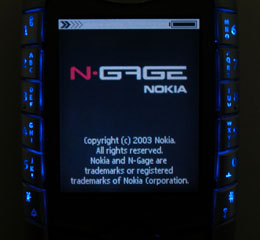PalmOne has released two new handhelds in their Zire range – the Zire 32 and 72.
The Zire 31, US$149 (€125) has a faster CPU than its predecessor and runs Palm OS 5.2. The PDA has a new-style controller on the front panel – allowing better navigation through documents, but also better for control whilst playing the growing range of Java games available. This controller, coupled with the new headphone jack and the mandatory expansion slot will ensure that buyers use the machine for playing media on the move.
Palm have included Bluetooth in their new Zire 72, US$299 (€251), allowing users to use an appropriate mobile phone to send messages on the move. The 72 is a somewhat striking Yves Klein blue colour – we can’t help but get the feeling that other colours might be in the pipeline.
The 64mb 72 also features a better digital camera than its 71 predecessor, sporting 1.2m pixels, backing that up with 2x digital zoom and 320 x 240 video capture. The camera has better integration with Palm applications than has been seen before – photographs can be attached to contacts and used as backdrops within programs.
But what about an update to the T3? Surely the Tungsten T4 (and Palm OS6) can’t be that far off?
 If true, the impact is far reaching. Games written for the N-Gage will run on any phone running the Symbian operating system and according to Symbian, over 2.68 million handsets were shipped with their OS in the first half of 2003.
If true, the impact is far reaching. Games written for the N-Gage will run on any phone running the Symbian operating system and according to Symbian, over 2.68 million handsets were shipped with their OS in the first half of 2003.